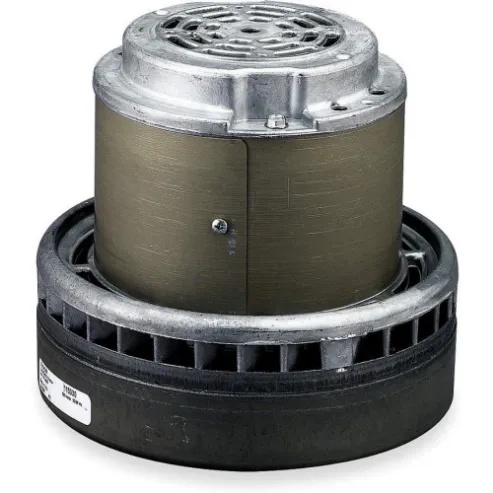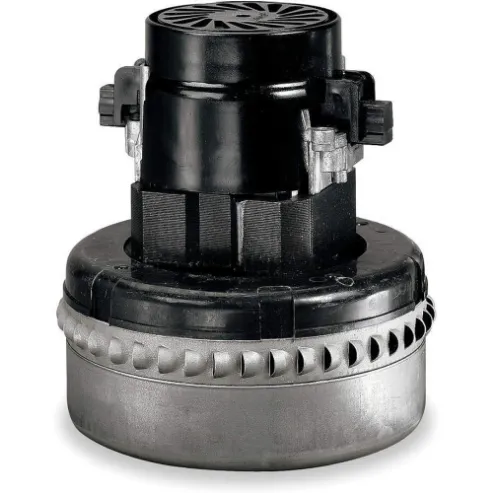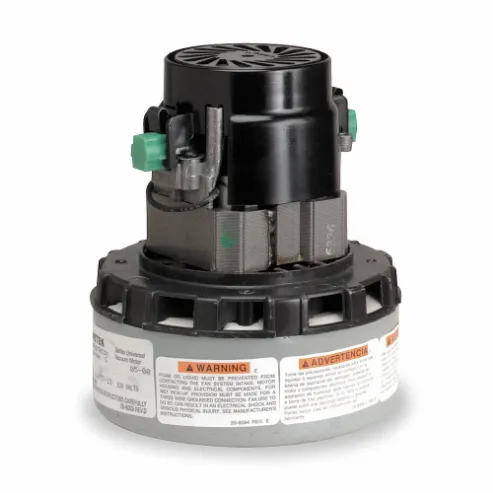Ametek Lamb 114787 vacuum motor is used in commercial canisters or utility vacuums, material handling & transfer systems, car wash vacuums and central vacuum systems. This motor generates powerful suction and efficiently moves clean & dry air. Additionally, it complies with safety standards, making it a safe and effective choice for various vacuum applications.
Features:
- It features a peripheral discharge design, allowing air to flow into the bottom of the motor and discharge through vents, ensuring efficient cooling and reliable operation.
- This vacuum motor comes with a cooling fan on top of the motor, which blows clean air over the motor, enhancing its cooling efficiency compared to other motor types like thru-flow and tangential motors.
- This Ametek 114787 vacuum motor is equipped with a robust ball bearing system, ensuring smooth and reliable operation over an extended lifespan of up to 1000 hours.
- It is UL-listed (E47185) and ensures compliance with safety and performance regulations for electrical equipment.
- This Ametek 114787 vacuum motor has a single-phase Universal AC / DC motor design, providing versatility in voltage compatibility.
Compatible Accessories:
- Ametek Lamb 835253-50 and Ametek Lamb 833300-50 carbon brushes: These Ametek Lamb carbon brushes are precision-engineered replacements tailored for the Ametek Lamb 114787 vacuum motor. They have high-grade carbon material construction and guarantee precise fit & electrical conductivity, ensuring seamless compatibility and efficient performance.
Frequently Asked Questions:
Q. What are the factors to consider while installing this Ametek Lamb 114787 vacuum motor?
A. When installing this vacuum motor, ensure that the mounting screws are not over-tightened, as this may cause damage to the fan casing and blades. A touch beyond finger tight is usually sufficient to mount and seat the motor.
Q. What is the role of a fan or impeller in a vacuum motor?
A. The fan or impeller is attached to the motor shaft and spins rapidly when the motor is running. Its spinning creates a low-pressure area within the vacuum, which generates suction and pulls air and debris into the vacuum cleaner.
 € EURChange Country
€ EURChange Country




